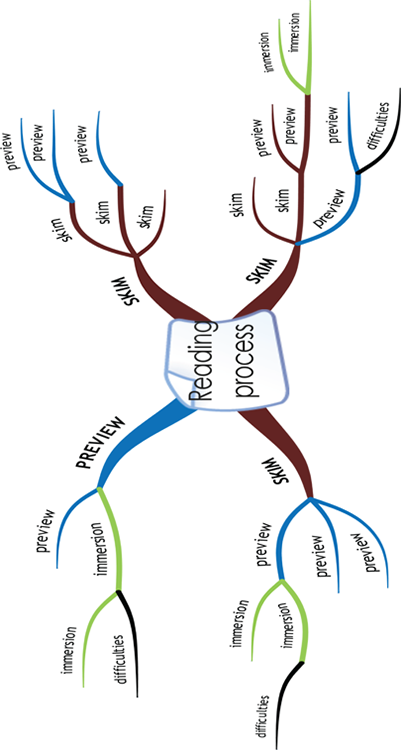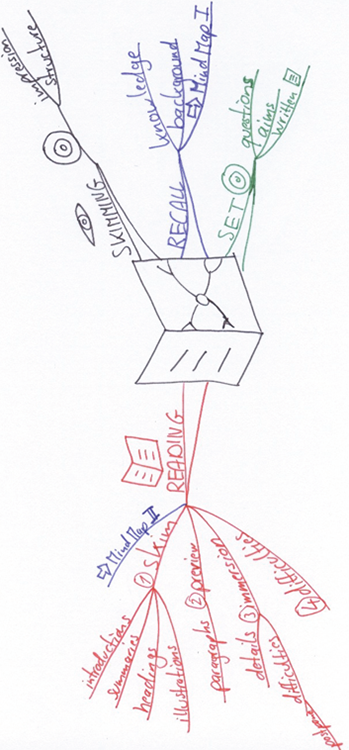Figure 12-1: The reading process as a Mind Map.
Step 4: Difficult passages
In the last step you focus your attention on the difficult passages you’ve already marked as such. The Mind Map you’ve been preparing so far may help you to elucidate their meaning in light of the book as a whole. Any new information gleaned in this way can also be entered in the existing Mind Map.
Figure 12-1 illustrates how the Mind Map you use to make notes grows step by step.
The reading technique presented here is similar to the procedure used for generating a Mind Map. In step 1 you are at main-branch level and insert the first details into the map. In steps 2 to 4 you work through the substance of the book and can add relevant sub-branches to your Mind Map. The fact that you can extend and supplement Mind Maps flexibly at any time is particularly well suited to this kind of modular reading. Having a constant overview of everything (the Mind Map) and previous knowledge about the text make reading much easier.

Figure 12-2 summarises again the main points of the reading technique presented in this chapter in the form of a Mind Map:
Figure 12-2: Overview of the reading technique.

Get Mind Mapping For Dummies now with the O’Reilly learning platform.
O’Reilly members experience books, live events, courses curated by job role, and more from O’Reilly and nearly 200 top publishers.


